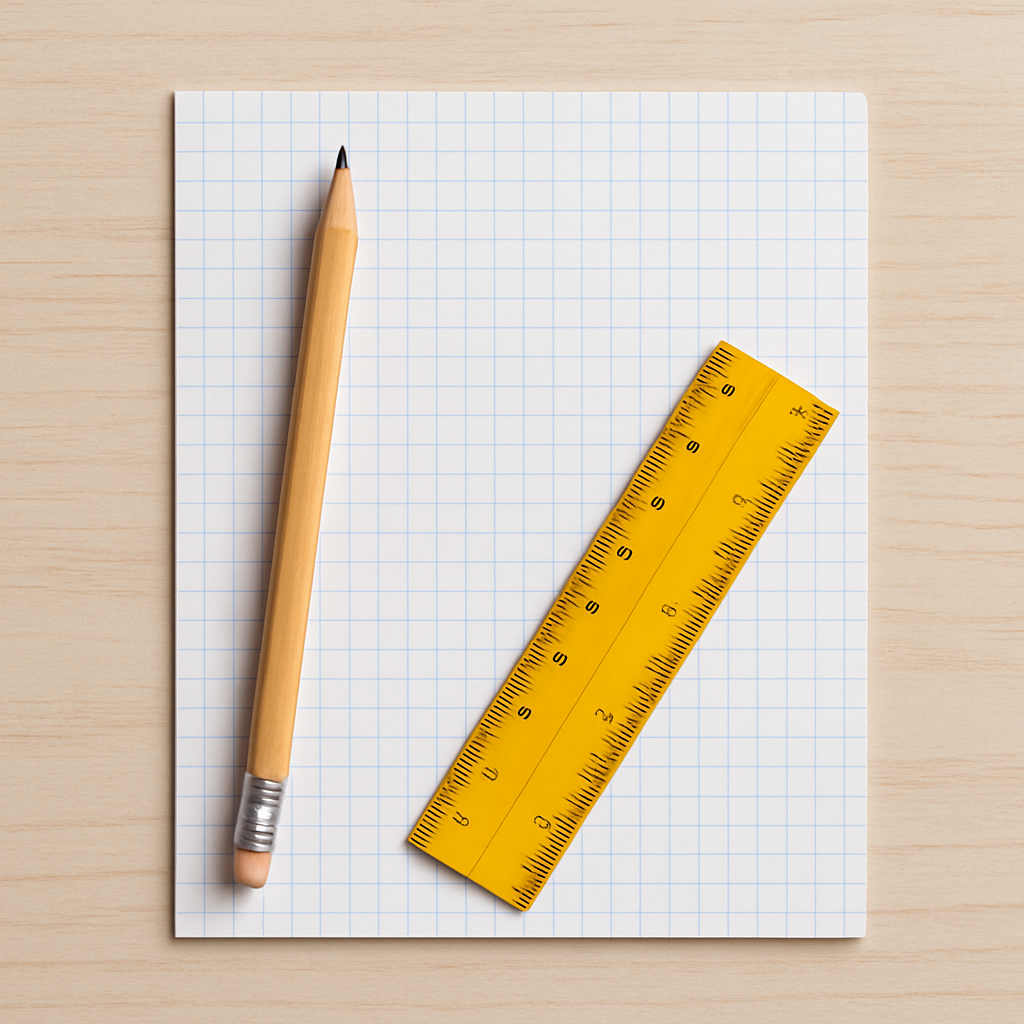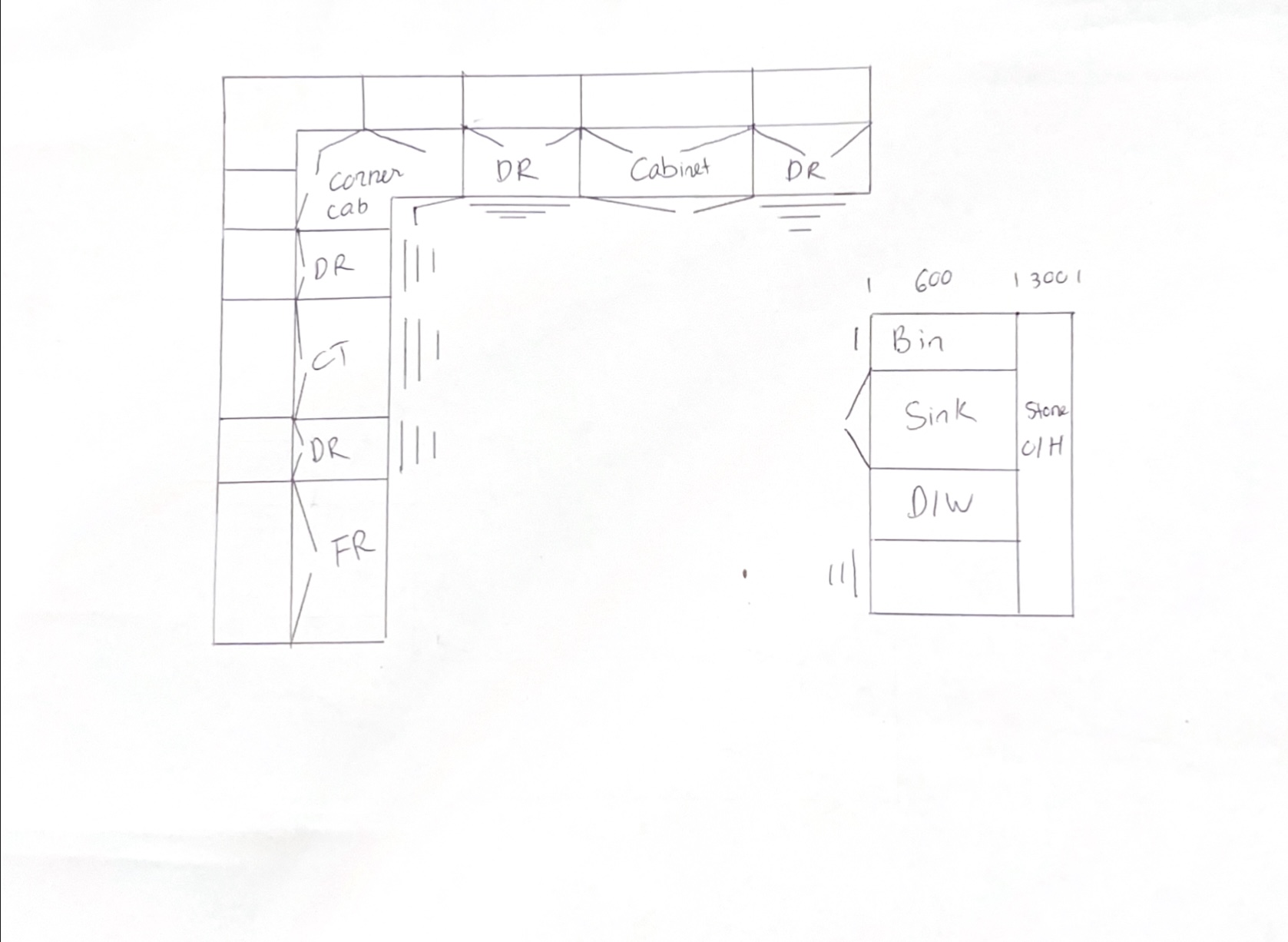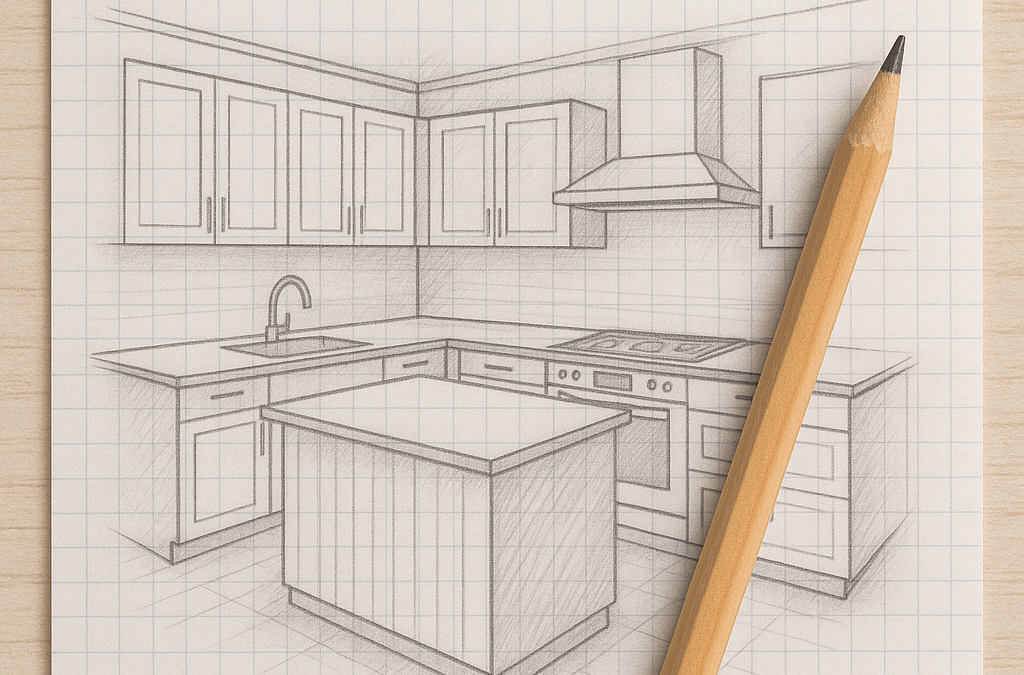You don’t need fancy software to start designing your dream kitchen.
Sometimes, the best ideas begin with something simple: pencil, paper, and a ruler.
Sketching your own kitchen by hand helps you:
- Visualise the space clearly
- Plan a more practical layout
- Avoid mistakes during renovation
- Save time (and money) when working with your builder or designer
Here’s a simple, step-by-step guide to designing your own kitchen by hand, even if you’re not an artist.
1. Grab the Right Tools
You’ll need:
- Plain A3 or A4 paper
- Sharp pencil (and an eraser!)
- Ruler (ideally 30cm long)
- Optional: graph paper to help with neat lines
Tip:
If you have graph paper, use 1cm = 100mm (10cm) scale — it makes it easy to keep everything proportional.

2. Measure Your Existing Space Carefully
Before drawing anything, measure your kitchen walls and features:
- Wall lengths
- Window and door sizes (and distances from corners)
- Ceiling height
- Location of plumbing (sink, dishwasher)
- Electrical points (oven, fridge, rangehood)
Write everything down clearly.
Tip:
Double-check your measurements — mistakes here cause major design problems later!
3. Draw the Basic Room Shape
Start by drawing the outline of your kitchen to scale:
- Sketch the walls.
- Mark windows, doors, and any obstacles like bulkheads.
- Show which way doors and windows open.
Use your ruler to keep lines straight and your scale consistent.
Important:
Minimum walkway space between benches or islands should be at least 900mm to allow comfortable movement.
4. Plan Your Work Zones
A good kitchen layout follows the work triangle rule:
- Sink, fridge, and cooktop should form a triangle for easy movement.
Key dimensions to remember:
- Keep each side of the triangle between 1200mm and 2700mm.
- Make sure there’s bench space either side of the cooktop for safety.
Tip:
A compact, well-planned triangle saves time when cooking and reduces clutter.

Kitchen’s sketch example.
5. Sketch in Cabinets, Appliances, and Benchtops
Now add the details:
- Base cabinets (usually 600mm deep)
- Wall cabinets (usually 350mm deep)
- Fridge space (typically 900mm wide)
- Dishwasher (600mm wide)
- Oven (600mm wide)
- Island (allow 900mm+ walkways around)
Important construction tips to include:
- Drawers should be no wider than 1000mm — wider drawers risk sagging or breaking due to heavy loads.
- Overhead cabinets must be at least 600mm above an electric cooktop and 700mm above a gas cooktop (to comply with Australian building regulations).
- Stone benchtop overhangs (like on breakfast bars) should be 900mm wide maximum for standard carcass depth without extra support like brackets or legs.
Tip:
Use rectangles and boxes — your drawing doesn’t need to be artistic, just clear and measured.
6. Think About Storage and Functionality
Ask yourself:
- Do I have enough drawers near the cooktop for pots and pans?
- Is there a bin close to the sink?
- Are everyday items easy to access?
Tip:
Group similar storage zones together (e.g., all baking items near the oven) to make cooking easier.
Pro Tip:
Drawers are more convenient than deep cupboards — but remember the 1000mm maximum drawer width to keep them strong and reliable!
Designing your kitchen by hand with just pencil, paper, and ruler gives you control and confidence before you bring in professionals.
It helps you think carefully about functionality, safety, and practicality — not just looks.
By following key tips like:
- Keeping drawer widths sensible
- Maintaining minimum clearances above cooktops
- Limiting stone overhangs for safety
… you’ll create a smart, efficient, and safe kitchen layout that’s ready to be brought to life!
Need help refining your hand-drawn kitchen plan? Contact us — we love turning great sketches into dream kitchens!

